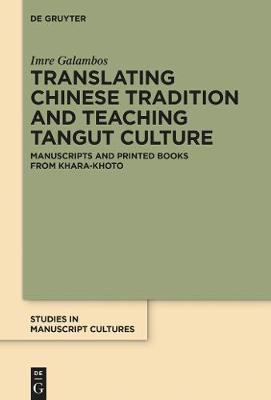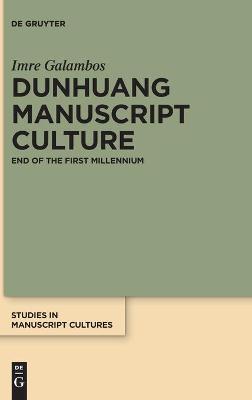Studies in Manuscript Cultures
1 primary work • 3 total works
Book 2
This study is based on a manuscript which was carried by a Chinese monk through the monasteries of the Hexi corridor, as part of his pilgrimage from Wutaishan to India. The manuscript has been created as a composite object from three separate documents, with Chinese and Tibetan texts on them. Included is a series of Tibetan letters of introduction addressed to the heads of monasteries along the route, functioning as a passport when passing through the region. The manuscript dates to the late 960s, coinciding with the large pilgrimage movement during the reign of Emperor Taizu of the Northern Song recorded in transmitted sources. Therefore, it is very likely that this is a unique contemporarytestimony of the movement, of which our pilgrim was also part. Complementing extant historical sources, the manuscript provides evidence for the high degree of ethnic, cultural and linguistic diversity in Western China during this period.
Translating Chinese Tradition and Teaching Tangut Culture
by Imre Galambos
Published 13 November 2015
This book is about Tangut translations of Chinese literary texts. Although most of the extant Tangut material comprises Buddhist texts, there are also many non-religious texts, which are mostly translations from Chinese. The central concern is how the Tanguts appropriated Chinese written culture through translation and what their reasons for this were. Of the seven chapters, the first three provide background information on the discovery of Tangut material, the emergence of the field of Tangut studies, and the history of the Tangut state. The following four chapters are devoted to different aspects of Tangut written culture and its connection with the Chinese tradition. The themes discussed here are the use of Chinese primers in Tangut education; the co-existence of manuscript and print; the question how faithful Tangut translators remained to the original texts or whether they at times adapted those to the needs of Tangut readership; the degree of translation consistency and the preservation of the intertextual elements of the original works. The book also intends to draw attention to the significant body of Chinese literature that exists in Tangut translation, especially since the originals of some of these texts are now lost.
"Dunhuang Manuscript Culture" explores the world of Chinese manuscripts from ninth-tenth century Dunhuang, an oasis city along the network of pre-modern routes known today collectively as the Silk Roads. The manuscripts have been discovered in 1900 in a sealed-off side-chamber of a Buddhist cave temple, where they had lain undisturbed for for almost nine hundred years. The discovery comprised tens of thousands of texts, written in over twenty different languages and scripts, including Chinese, Tibetan, Old Uighur, Khotanese, Sogdian and Sanskrit. This study centres around four groups of manuscripts from the mid-ninth to the late tenth centuries, a period when the region was an independent kingdom ruled by local families. The central argument is that the manuscripts attest to the unique cultural diversity of the region during this period, exhibiting-alongside obvious Chinese elements-the heavy influence of Central Asian cultures. As a result, it was much less 'Chinese' than commonly portrayed in modern scholarship. The book makes a contribution to the study of cultural and linguistic interaction along the Silk Roads.


